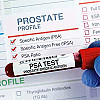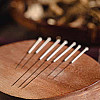Autumn's pollen and mold can challenge those with allergies
For millions of allergy sufferers, fall is a potent time for allergy-inducing allergens, reports the October 2014 Harvard Health Letter. "The fall allergy season is usually the result of pollen from weeds. But after the first frost, it's all about mold," says Dr. John Dobrowski, an otolaryngologist at Harvard-affiliated Massachusetts Eye and Ear Infirmary.
The predominant allergen in the fall is ragweed, which grows abundantly throughout the South, North, and Midwest. Outdoor molds are another cause of fall allergies. They are in soil, compost piles, and decomposing leaves. Mold spores are abundant after the ragweed season. They are light, very small, and easily inhaled into the lungs.
In some people, inhaling allergens causes the body to overreact. The immune system mistakes a generally harmless substance, such as pollen, for a harmful invader. That triggers a chain of events that leads to certain cells releasing histamine. Histamine allows fluid to escape from small blood vessels into tissues. This leads to the classic allergy symptoms of runny nose, watery eyes, and sneezing.
These allergies can often be treated with over-the-counter or prescription medications. Some people benefit from allergy shots. Other steps include avoiding allergens by wearing a face mask when outside, keeping home and car windows closed, removing decaying leaves from the yard, and changing air filters.
Read the full-length article: "Fall allergen alert"
Disclaimer:
As a service to our readers, Harvard Health Publishing provides access to our library of archived content. Please note the date of last review or update on all articles.
No content on this site, regardless of date, should ever be used as a substitute for direct medical advice from your doctor or other qualified clinician.












